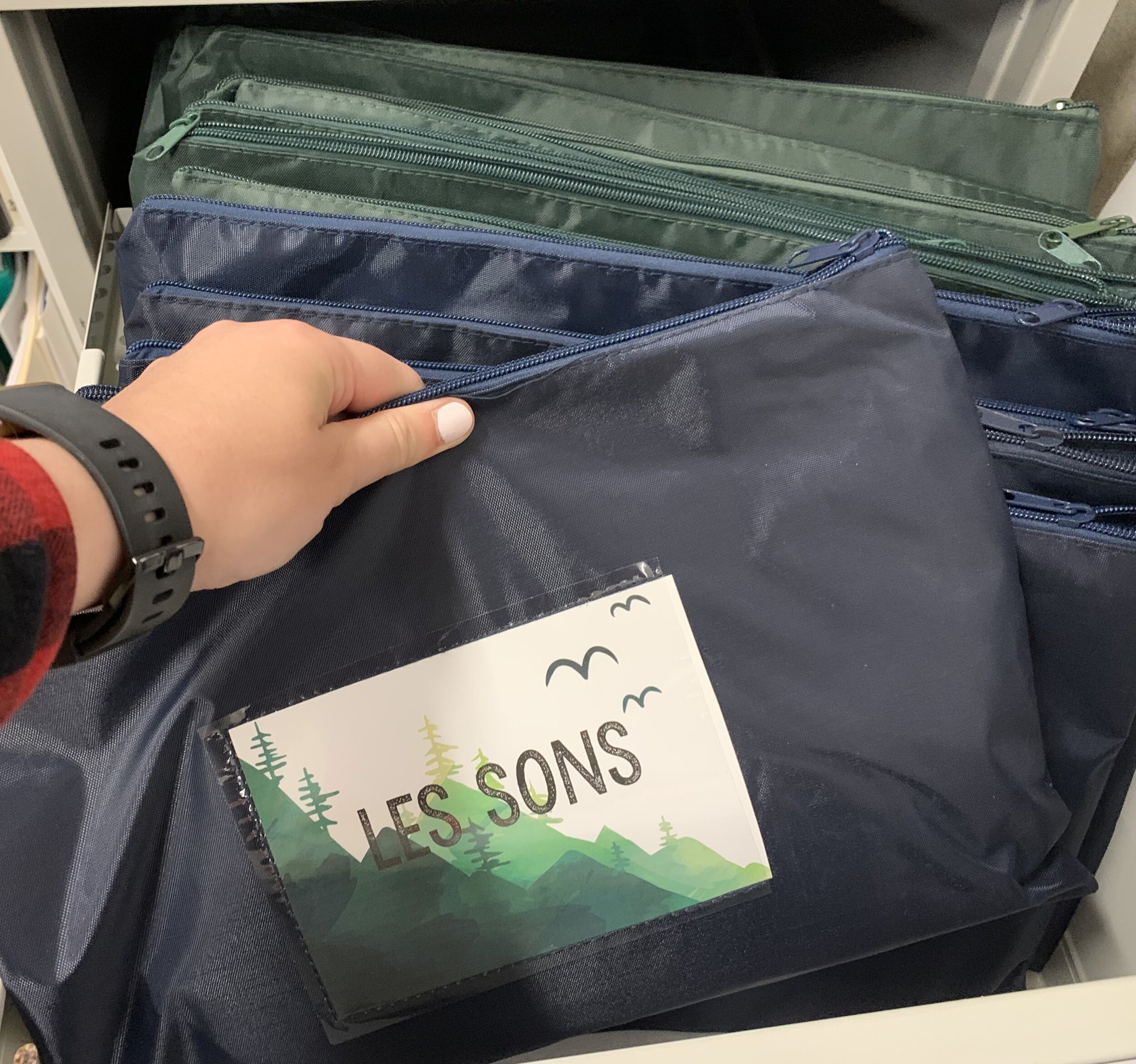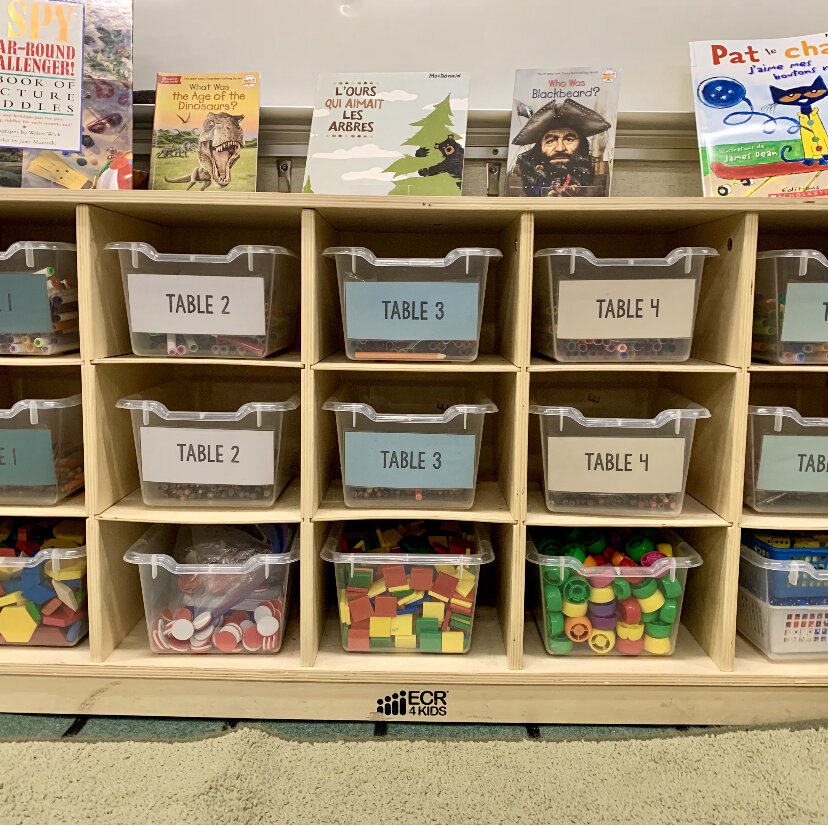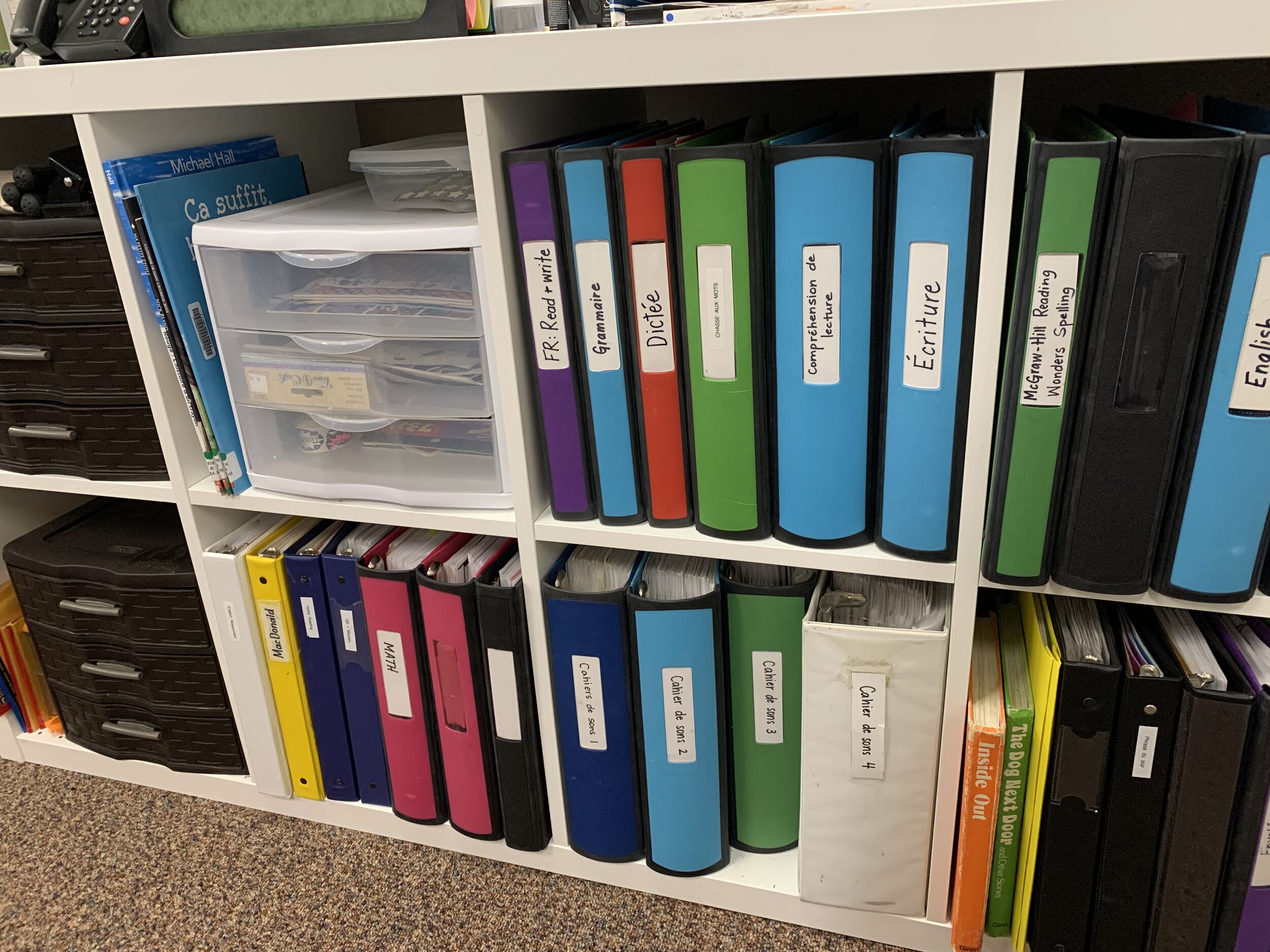Classroom Organization Tips
If you know anything about me at all, you’ll probably know by now that I am 100% a type A personality. I always have been, I’ve been a perfectionist my entire life and organization is part of that. Don’t get me wrong, I do have messes, but I am sure to clean those up fairly promptly because disorder is not my friend.
My classroom is VERY organized (with a few rougher areas of course) but that’s the overall impression you’d get. I’ve walked into some very unorganized classrooms and it stresses me out.
Just because I like organizing doesn’t mean that’s everyone’s cup of tea, however, I do get lots of questions about organization. So let’s solve some of those problems, here are a few of my best organization tips for around your classroom!
Math and Literacy Centre Storage
I don’t do daily 5, but I do early finisher bins and this is where my centre type work comes in. I store by month and by skill. My monthly ones have both math and literacy involved too but if they’re thematic, I store separately.
The monthly bins are the scrapbook cases from Michaels. The French labels are from Fun in French Immersion (download for free). Depending on the centre, it’s either in a little baggie, an envelope or an elastic.
I also organize by skill. These are the messenger bags from Dollarama. They’re very sturdy and have a little window pocket in the front for a label. They fit perfectly in a filing cabinet too! The blue ones are for literacy skills and the green ones are for math. I have things like “les syllabes”, “les sons” for literacy and things like “l’addition”, “la multiplication”, “la valeur de position” for math so that when we are working on that skill, I can pull out those activities to use either in early finisher bins, in small groups or as morning work.
I love the photo boxes for centres too. I use these for my grammar task cards and they fit perfectly! Find all my grammar task cards HERE.
Early finisher bins
Early finisher bins that are filled with math and literacy activities are stored in this IKEA Trofast system. Each month there are 9 bins with activities to keep early finishers busy.
Learn more about my early finisher bins HERE.
Student supplies
Every year I seem to come up with a different solution for storing student supplies. How we each go about it will vary greatly depending on our current Covid-19 regulations, if students use shared or communal supplies, if you have desks or tables…so many factors to consider. At our school, parents pay a fee and teachers purchase class supplies. While it’s a lot of work in early September, I love this system because I can buy exactly what my students need and I always have leftover money that I use to buy materials for special projects.
This year we are allowed shared supplies. I’ve created a bit of a hybrid of the shared and individual as last year when we were 100% individual, I did like some parts of that so have decided to keep them this year.
I have 5 tables in my class so each table has a bin of pencil crayons and a bin of markers. These are the shared materials. This also makes it easier to put a rogue marker away, just put it in the bin of the table it was closest to, rather than trying to figure out who it actually belongs to.
Each student has a pencil case with their personal materials. Their name is attached with a tiny binder ring to the zipper. Inside they have 2 pencils, a dry erase marker, an eraser, scissors, a glue stick and a glove (for erasing dry erase). They keep this case in their personal bin. Other than the glove, everything in this personal bag is labeled.
Since I don’t have any desks in my class, we need somewhere to store our notebooks, duotangs and supplies. Each student has their own bin to keep everything in. These are the IKEA Trofast bins. The unit was already in the school and is quite old so I don’t know where you’d find something like it. You could just use a few Trofast units to create enough slots for students.
The labels are available in a bunch of colours to match all my decor themes in my TPT store.
Designated places for work & notices
I have two large tubs in front of my desk. One is for finished work and one is for unfinished work. Sometimes I collect work and store it elsewhere. This happens with journals or math books. If it’s something I can mark immediately, they come show me and then it gets put away in the appropriate duotang.
The only time unfinished work doesn’t go in the bin is when it’s something that the whole class is not done working on, such as a project or writing piece. In those instances, I collect their work and store it elsewhere. The unfinished bin is for those who didn’t finish in time and will need to work on it at another point.
In between those two bins is a little basket called “Pour Madame” which is where students put any notes, forms, notices, money etc. that came from home.
Teacher books
My teacher books are stored in a cupboard. The boxes are not the prettiest, but the cupboard closes, so who cares! These are not books that my students get to choose for silent reading unless they specifically request one to read, then it goes back in my cupboard when they’re finished. I use these for teaching and for read alouds.
I organize by SEL/teaching books, indigenous books, French read alouds, English read alouds, thematic books (that go in my featured book crate each month), and by author. For example, I have Mo Willems, Rachel Bright, and Robery Munsch. When there’s a series such as the Jon Klassen books or the reinvented fairy tales, I will put those all together too.
Student books
I have a few areas around my room with books for student use. First are my two bookshelves. The shelf on the left is for French books. The baskets are for picture books by series or theme, like Robert Munsch, Mo Willems, Pat le Chat and les animaux. Most of the time, my students aren’t ready for chapter books in French but I do have a few and some graphic novels on the bottom shelf. All the other French picture books are in my wooden display case.
The shelf on the right side is for my English books. Chapter books that are in series go in the blue baskets. The baskets have things like the “Who was” books, Geronimo Stilton, Flat Stanley, Junie B. Jones, Roald Dahl books and Magic Treehouse. The rest of the chapter books go underneath and are grouped by series too. These ones just don’t tend to have enough for a basket or wouldn’t fit in a basket. Next there are 2 wooden baskets. On the left is the Rainbow Fairy series (very popular with my kiddos) and books about animals (mostly National Geographic readers). On the bottom shelf in the white bins are all the English picture books.
My “livres en vedette” (featured books) crate is where my seasonal and holiday books go. These are available to students during the month and then get put away in my cupboard. I like to have this rotation as it adds excitement for new books that are only available for a limited time!
I also like to display books around my room. This draws attention to them, more so than just being in a basket. You’ll notice that books are on display on the bookshelves and they’re also displayed above the student supply unit.
Teacher storage
Behind my desk is a Kallax shelf from IKEA. This is where my most used binders live so they’re within easy reach. I love the Staples binders because they’re durable and the rings are easy to open. Nearly all of them have come from thrift stores for a couple dollars each, rather than crazy prices at Staples. I also have 3 Sterilite drawers (for word wall strips, extra materials and stickers). I keep any books that I’ve taken out from the library here too so they’re always in one place.
My desk is very old but I love it! I had them to bring it to my school from cold storage (the place that old furniture goes to collect dust). I have my frequently used writing tools in jars, little bits like paper clips, elastics and push pins in the little green box and all my tools (staple remover, Allen key, screw driver…) and sticky notes in the white drawers. I keep a loud bell and my chime within easy reach as noise management/attention grabbers.
On top of the Kallax shelf is this organizer. I use it to store extra copies of things that I have prepped but haven’t yet put in their day folder or for things that we work on over a period such as a science booklet, project etc.
Portfolios
I use these hanging file folders to store art projects, special writing samples, any assessments and projects. Inside the hanging folder is a large piece of cardstock that’s folded in two. In September, students decorate their folder.
For conferences we need to show a portfolio of work so I take what’s in there, add a few other things like their journal and any work they’re proud of to share with parents.
*Crate available at Michaels.
Vocabulary tools for writing
My students have access to a variety of picture lexicons. As second language learners, half the battle of writing is the vocabulary. I use a mix from Mme Andrea, For French Immersion and some I’ve made myself. I organize them by theme and students are responsible for putting them back into the correct folder. Sometimes they get mixed up, but generally they do a pretty good job of keeping it organized.
*Bin and folders available at Michaels.
More designated places for things…
I like to have a designated basket for both library books and agendas.
While we only go to library once a week, having a place to put books means that if they bring it back early, there’s a place for it to go and not get lost.
The agenda bin makes it easy for me to grab someone’s agenda if I need to write a note or put a form inside.























